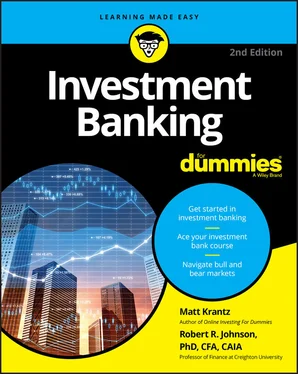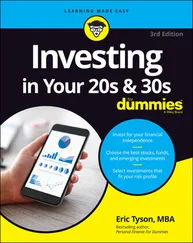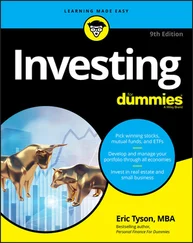Serving needs of clients: Sometimes computers are employed to serve the customers of investment banks, helping them sell large positions of stock. Selling for big customers takes a bit of finesse — if all the stock is dumped at one time, the stock price can be pushed lower and cause the seller to reduce his or her own proceeds. Investment bankers have systems in place to help them sell more gradually to avoid these problems.
Part of market-making responsibilities: Computerized trading may also be part of investment banks’ role as market makers. Investment banks certainly trade to try to make a profit, looking for chances to buy and sell stocks for a gain. But in some cases investment banks can also serve a secondary role. When making a market, investment banks aren’t necessarily trading to make a profit (although they probably don’t complain when they do). They’re the buyer of last resort, standing on the market looking to buy and sell when there are people looking to sell and buy. They’re providing liquidity.
The type of analysis used in trading operations
Many large investors that work with investment banks aren’t very transparent about the trading they’re doing — and that’s no mistake. One of the greatest downsides of trading is that when other investors get wind of the strategy and start to copy it, the strategy doesn’t work anymore.
Imagine that an investment bank’s client figured out that stocks tend to soar on the first trading day of January. Talk about an easy way to make money. The client would simply buy stocks on December 31 and sell them on January 1, or whatever the first day of trading is. But if the secret got out, other traders would buy stocks on December 31, too, which would spoil it for everyone. Why? The stock prices would be pushed up on December 31, essentially eliminating the January 1 pop.
Due to the value of keeping trading secrets quiet, you don’t often hear what investment bankers’ clients have been doing until the strategy blows up on them. But investors can see that typically trading strategies fall into several categories, including
Cross-market arbitrage: Arbitrage is a fancy word used to describe a situation when assets are temporarily mispriced relative to each other. These cross-market arbitrage strategies can get pretty complicated, because computers are programmed to find unexplained relative differences in price between stocks, bonds, exchange rates, and currency prices. The computers can locate mispriced assets and theoretically make risk-free trades.
Event arbitrage: Some trading operations try to anticipate and place bets ahead of major market-moving events. Events that may move stocks include a company being included in the popular Standard & Poor’s 500 stock market index, which is usually a boon for the stock. Another example may be a company being ripe to be bought or a small biotech firm getting approval to market a new blockbuster drug.
High-frequency technical trading: Another area of trading that some investment firms are turning to is a type of high-frequency trading where they take advantage of different trading speeds. It’s becoming increasingly common for large trading operations to develop light-speed networks that will let them place that buy or sell order just a millisecond or less before competitors, giving them an edge.
 High-frequency technical trading is attracting attention from regulators. There’s a concern that some investment bankers are taking advantage of the trading systems to get an unfair advantage.
High-frequency technical trading is attracting attention from regulators. There’s a concern that some investment bankers are taking advantage of the trading systems to get an unfair advantage.
Chapter 3
How Investment Bankers Sell Companies
IN THIS CHAPTER
 Digging into the specific tasks investment banks undertake when selling a company
Digging into the specific tasks investment banks undertake when selling a company
 Finding out what’s included in an IPO prospectus
Finding out what’s included in an IPO prospectus
 Identifying the keys to a successful IPO
Identifying the keys to a successful IPO
 Understanding how sell-side research aids in the process of selling a stock
Understanding how sell-side research aids in the process of selling a stock
 Determining who sell-side research analysts serve
Determining who sell-side research analysts serve
 Diving into a sample sell-side research report to understand its purpose
Diving into a sample sell-side research report to understand its purpose
Investment banking isn’t exactly a glamorous business. When was the last time you heard a 6-year-old say she wants to be an investment banker when she grows up? Much of what investment bankers do is lucrative, but it’s behind the scenes and tucked in the back rooms of the financial system.
If there’s an area where investment bankers really shine, it’s in the process of selling a company to the public for the first time in an initial public offering (IPO). The IPO is one of the few times when the general public has a chance to see and interact with investment banks and the financial products they’re selling and see the role investment bankers play in the economic machine.
We introduce the importance of the IPO in Chapter 2. In this chapter, we delve more deeply into the IPO process, taking a look at what investment banks look for when selling a company in the public markets. One of the key jobs of investment banks in bringing a company to the public markets is assisting in creating a document that spells out the details of an offering, called the prospectus. Here, we explore the prospectus in detail, along with the ways investment bankers can make sure an IPO goes off smoothly.
Closely linked to the IPO process is the sell-side analysis function of many investment banks. These operations help complete the process of selling the company that investment banks are often tasked with.
Also in this chapter, you get an understanding of the types of research that go into a research report. We dissect and analyze a sample report to illustrate how investment banks dig into a company’s financials and prospects so they can either recommend a security or advise against it.
Getting Companies Ready for Sale on Public Markets
There comes a time in a company’s life when going public is often the best option. When a company gets big enough, and a broad enough audience of investors is lined up to buy a piece of a company, it’s time to strongly consider an IPO.
When a company goes public, it carves itself into pieces that investors in the general public can buy. Just about every stock you can invest in, at one point, first sold its stock in an IPO.
Companies often turn to IPOs when
Bank loans are too expensive. When a company gets bigger, borrowing from the bank becomes a relatively costly form of raising money.
Venture capitalists are too onerous. Venture-capital firms are great sources for young companies that don’t have many options. But these investors insist on big ownership stakes, stripping the entrepreneur’s ownership in the companies. Venture-capital funds are pools of money from private investors who are looking to hit it big.
Читать дальше

 High-frequency technical trading is attracting attention from regulators. There’s a concern that some investment bankers are taking advantage of the trading systems to get an unfair advantage.
High-frequency technical trading is attracting attention from regulators. There’s a concern that some investment bankers are taking advantage of the trading systems to get an unfair advantage. Digging into the specific tasks investment banks undertake when selling a company
Digging into the specific tasks investment banks undertake when selling a company










